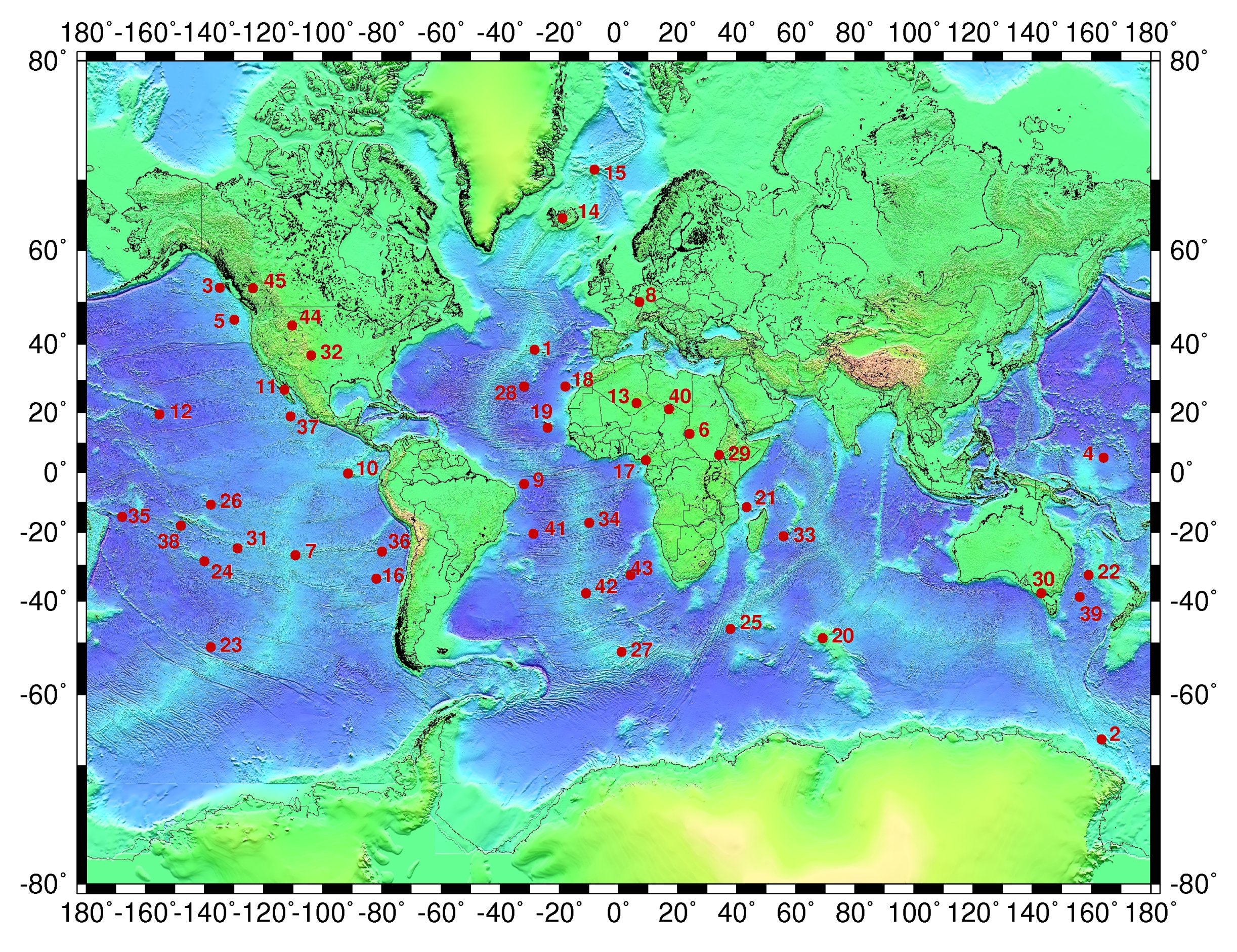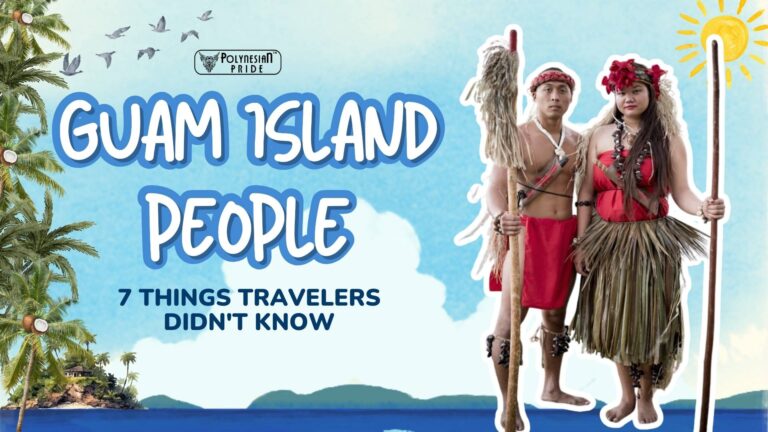Where Is Rarotonga? Uncover the Jewel of the Cook Islands

Rarotonga, the largest and most populous of the Cook Islands, is an idyllic paradise in the South Pacific. This tropical haven, part of an archipelago with 15 islands, boasts lush landscapes, crystal-clear waters, and a rich cultural heritage. Rarotonga is not just a destination but an experience that offers adventure, relaxation, and cultural immersion.
If you’re wondering, “Where is Rarotonga?” this article will provide you with all the essential information about Rarotonga, including its geography, points of interest, and reasons it should be your upcoming travel spot.
I. Quick Information About Rarotonga, Cook Islands
Where Is Rarotonga? Rarotonga is the most significant and densely populated island among the Cook Islands. This volcanic island spans an area of 67.39 km2 (26.02 sq mi) and houses nearly 75% of the nation’s inhabitants, totaling 10,898 out of 15,040 people. The island hosts the Parliament buildings and the international airport of the Cook Islands. Rarotonga is a highly sought-after tourist hotspot featuring numerous resorts, hotels, and motels. Avarua, situated on the northern shoreline, functions as the capital of the Cook Islands.

Captain John Dibbs, who commanded the colonial brig Endeavour, was recognized as the European discoverer of Rarotonga on July 25, 1823, while transporting missionary Reverend John Williams.
II. The History of Rarotonga
Besides learning “Where is Rarotonga?”, then the history of the island’s development is equally interesting. The earliest signs of human activity in the Southern Cook Islands date back to approximately AD 1000. Oral histories suggest that Rarotonga was settled by various groups, such as Ata-i-te-kura and Apopo-te-akatinatina in the ninth century, followed by Tangi’ia Nui from Tahiti and Karika from Samoa around 1250. The island developed trading links with the Austral Islands, Samoa, and the Marquesas, importing goods like basalt for adze heads. Most settlement cargo, including livestock and crops, originated from Southeast Asia.

Rarotonga’s tallest mountain, Te Manga, is significant in the Cook Islands’ culture. Notably, Māori tradition recounts Kupe visiting Rarotonga during his travels. The first European contact with Rarotonga was by Fletcher Christian in 1789, followed by Captain Theodore Walker in 1813. The first recorded European landing was by Captain Philip Goodenough and William Wentworth in 1814. Christian missionary activities began in 1823 with Reverend John Williams and Papeiha, leading to widespread conversion by 1830.
From 1830 to 1850, Rarotonga became a hub for whalers and traders. Missionaries sought to limit European influence, resulting in land sale restrictions. Despite these efforts, European traders established a presence. In 1865, fearing French annexation, Rarotongan chiefs sought British protection, which was unsuccessful. By 1883, Rarotonga’s chiefs were recognized as an independent government, with Makea Takau Ariki recognized as “Queen of Rarotonga.” In 1888, the island became a British protectorate and was annexed by New Zealand in 1901.

Wikimedia Commons)
III. Understanding Rarotonga’s Location
1. Where Is Rarotonga?
When planning a trip to this picturesque destination, many people wonder, “Where Is Rarotonga?”, Rarotonga is approximately 3,000 kilometers northeast of New Zealand and about 1,000 kilometers south of Tahiti. It is part of the Cook Islands, a self-governing territory in free association with New Zealand. The island is a kidney-shaped volcanic landmass with a circumference of 32 km (20 miles) and a maximum width of 11.2 km (7.0 miles) from east to west. A lively coral reef surrounds it, featuring some of the most stunning lagoons globally.

2. The Geography of Rarotonga

In addition to finding the answer to the question “Where is Rarotonga?”, you should also know more about the terrain of this beautiful island. Rarotonga is the peak of an extinct volcano from either the Pliocene or Pleistocene epochs that rises 5000 meters above the ocean floor. It was formed between 2.3 and 1.6 million years ago, with additional volcanic activity occurring between 1.4 and 1.1 million years ago. Although its location suggests the Macdonald hotspot could have created it, its relatively young age leads to its origin being linked instead to a brief Rarotonga hotspot or renewed volcanic activity at Aitutaki.
The island’s interior features dense forests on hills divided by steep valleys, the weathered remains of its original volcanic structure. Several radial streams feed these hills, such as the Avatiu Stream and Takuvaine Stream. Te Manga, rising to 658 m (2,140 ft) above sea level, is the tallest point on the island, while the smaller Ikurangi peak overlooks the capital city.

The hilly landscape is encircled by a flat coastal area, including beaches, storm ridges, lowland swamps, and sediment deposits. Surrounding this is a fringing reef that varies in width from 30 to 900 meters. The reef is shallow, with a maximum depth of 1.5 meters, and has several passages, particularly at Avarua, Avatiu, and Ngatangiia. Beyond the reef’s crest, the outer reef drops sharply into deeper waters. The lagoon reaches its broadest point off the southeast coast near Muri Lagoon, which features four small islets or motu.
3. What is the best time to visit the Rarotonga, Cook Islands?

Besides the question “Where Is Rarotonga Island?” many people still wonder, “When is the best time to visit Rarotonga?”. The best time to visit Rarotonga is between April and November when the weather is more relaxed and drier. During these months, you can enjoy outdoor activities, beach lounging, and cultural experiences without the rain interruption.
⚡ Discover more about the Best Time to Visit the Cook Islands for Sightseeing and Vacation!
4. How to Get to the Rarotonga, Cook Islands?

You already know “Where Is Rarotonga?” but how can you get there? Travelers can reach Rarotonga primarily by air, with the Rarotonga International Airport being the main entry point for international flights. Direct flights come from New Zealand, Australia, and Los Angeles, making it accessible for visitors worldwide.
IV. Must-Visit Attractions in Rarotonga
Once you know “Where Is Rarotonga?” then the famous tourist attractions in Rarotonga are definitely what you want to know. Rarotonga is not only the largest in the Cook Islands archipelago but also a treasure trove of unique attractions waiting to be discovered. From pristine beaches to lush hiking trails, Rarotonga offers a diverse range of experiences that should not be missed. Here are 5 places you must visit when traveling to the Rarotonga:
1. Te Rua Manga (The Needle)
One of the most notable landmarks on Rarotonga, Te Rua Manga, commonly called The Needle, is a visible breccia formation that rises 413m (1,355ft) high. Although The Needle can be viewed from the island’s northern shore, those wishing to see it more closely will need to undertake part of the Cross Island Trek. The trek spans 6km/3.7 miles and takes approximately 3-4 hours.

Those only interested in ascending to The Needle can begin at the north end of the trail, hike up to the peak, and return via the same path, which typically takes between 1 hour and 30 minutes to 2 hours. Maunga Tours offers guided treks for the entire Cross Island route, while Raro Safari Tours provides a breathtaking view of The Needle from atop the mountain.
2. CICC Church Avarua

Rarotonga’s most remarkable buildings include the CICC churches throughout the island. The CICC (Cook Islands Christian Church) is the oldest Christian denomination on the island, having been founded by the London Missionary Society (LMS) in the early 1800s. This has led to the construction of some of the country’s oldest churches, built from coral limestone. The CICC Church Avarua, also known as “Avarua Ekalesia,” stands out with its impressive height of 30 feet (9 meters), set against the striking backdrop of The Needle. An informational panel at the church’s entrance provides further details about its history, and attending a Sunday service while listening to the beautifully sung hymns by local congregants is an experience not to be overlooked.
3. Muri Beach

Rarotonga’s main attraction is its beaches, so naturally, some of the must-see spots on the island are its coastal areas! The most famous beach, Muri Beach, is central for resorts, villas, and various water activities. With options like lagoon cruises, kitesurfing, stand-up paddleboarding, snorkeling, and kayaking, there’s always something exciting happening here, and the restaurants and cafes along the shore make it convenient to grab a bite. Rise early to witness a breathtaking sunrise or admire the four islets (motu) at any time throughout the day.
4. Punanga Nui Market

The Punanga Nui Market buzzes with activity every Saturday morning until noon, making it one of the top things when pondering what to do in Rarotonga. Dedicated artists, chefs, farmers, and harvesters from the island unite to create a vibrant scene filled with fresh tropical fruits, smoothies, grilled delicacies, colorful pareu (sarongs), and black pearls. This is an experience in Rarotonga that you definitely should pay attention to!
5. Papua Waterfall (Wigmore’s Waterfall)

Chill out and capture some fantastic photos at the Papua Waterfall. Also referred to as Wigmore’s Waterfall, this site is located in a forest clearing with picnic tables for your enjoyment. The waterfall is most impressive after a period of rainfall (fortunately, it is rare on Rarotonga), and swimming is safest in the lower pool rather than the upper area where the water pipes are located. Remember to bring insect repellent and steer clear of climbing the rocky edges, as there have been instances of falling rocks!
🔍 Find more of the Best Places to Stay in The Cook Islands for Any Budget
Enjoy your holiday to the fullest in Rarotonga!
Now that you know where Rarotonga is located, and have gathered much information about this idyllic destination, it’s time to plan your journey. From its breathtaking natural beauty to its rich culture and friendly locals, Rarotonga offers a unique escape into a paradise you will cherish forever. Whether you seek adventure, relaxation, or cultural immersion, Rarotonga awaits you on its shores.
Prepare your luggage and brace yourself for an unforgettable journey!
Frequently Asked Questions
What country is Rarotonga Cook Island in?
The Cook Islands are an autonomous island nation that is free to associate with New Zealand. Wellington offers support and assistance, and the residents of the islands hold New Zealand citizenship.
Which part of Rarotonga is the best to stay in?
If you’re looking for beaches and water activities, the ideal spots to stay on Rarotonga are Muri Beach on the east coast or Titikaveka on the southeast coast. The west coast, particularly Arorangi, is the top choice for excellent resorts, stunning sunsets, and opportunities for whale watching.
What is so special about Rarotonga?
Rarotonga has numerous areas featuring stunning resorts, hotels, and villas for accommodation. My favorite area in Raro was the Muri district – it was located next to the island’s most picturesque beach (Muri Lagoon), near nearby cafes and restaurants, and easy to access other parts of the island by car.
Where Is Rarotonga Located?
Rarotonga is approximately 3,000 kilometers northeast of New Zealand and about 1,000 kilometers south of Tahiti. It is part of the Cook Islands, a self-governing territory in free association with New Zealand.
What is the leading food in Rarotonga?
The traditional cuisine of the Cook Islands features freshly caught local seafood, chicken, pork, coconut, ginger, tropical fruits, and starchy vegetables such as taro and cassava.

I am Leilani Miller – I research focusing on Vanuatu – volcanic landscapes, blue holes, coral reefs & rainforests. I have over five years of experience researching and sharing insights on tourism and environmental activism. Explore and experience without limits through my latest article.
Contact information:
Email: [email protected]
Tel: +1 (808) 555-1528






